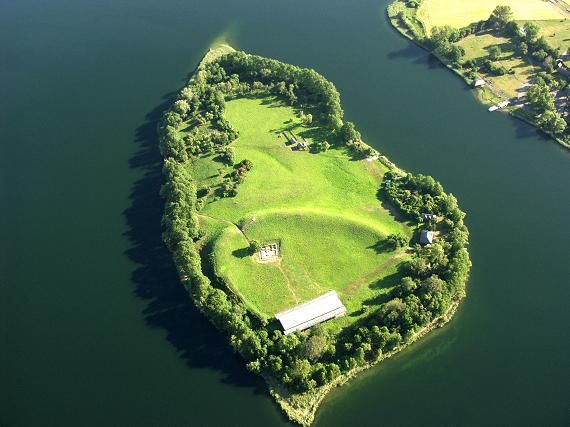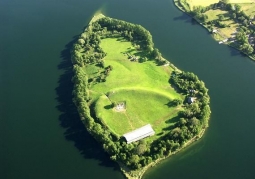Museum of the First Piasts - Lednogóra
No weather data
0.0 /5
Number of ratings: 0
Address: Dziekanowice 32 , 62-261 Lednogóra
The museum presents relics of stone palace and sacred architecture as well as wooden village buildings. The most important part of the exhibition are the remains of the first Piast stronghold. It began operating on January 1, 1969. At that time, the Archaeological Reserve was established in Ostrów Lednicki to protect the Piast heritage of this area. At that time, it was named the Museum of the Origins of the Polish State in Lednica. Ostrów Lednicki is an island that was the prince's residence of the Piasts. Probably it was here in 966 that Mieszko I was baptized. In the southern part of the island of Mieszko I erected a magnificent stone structure consisting of several parts (temple, palatium and baptistery). Its ruins in the form of walls in places reaching up to 3 m in height are visible to this day. The Museum of the First Piasts in Lednica is the only open-air museum in Poland of both archeological, ethnographic and natural nature. As I mentioned, there are remains of the stronghold of the first Piasts (palace, chapel and church, surrounded by a rampart) from the second half of the 10th century. In addition to the above-mentioned objects on the island, the museum currently also includes: - a castle with relics of architectural buildings in Giecz (from 1984), - the stronghold in Grzybów near Września (since 1997), - the stronghold in Radzim near Murowana Goślina - the so-called Ostrów Radzimski. In addition, an ethnographic department was created in the organizational structure of the museum - the Greater Poland Ethnographic Park in Dziekanowice, built in the form of an oval village from Greater Poland, reconstructed from scratch.
Komentarze
No results
Nearby places
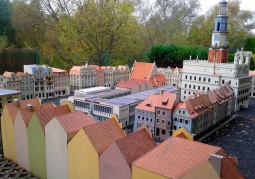
Open-air museum of miniatures - Pobiedziska
Category: Open-air museumsThis park presents models of historical buildings and fragments of buildings in Greater Poland cities. The main function of the museum is to show the spatial structure of the Piast Trail in its today's and partly...
11 km

The Lipski Palace and Park Complex - Czerniejewo
Category: PalacesThe palace is located on the northern edge of the city, connected to it by a long avenue, erected in 1771-1775 for Jan Lipski according to the design of the architect Ignacy Graff. The palace was originally a late...
14 km
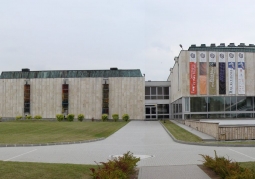
Museum of the Origins of the Polish State - Gniezno
Category: MuseumsThe museum presents collections related to the Polish early Middle Ages and the history of Gniezno and the surrounding area. The building was erected in the years 1970-1978. The institution was established in 1956 as...
14 km
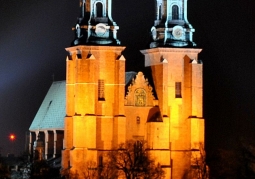
Primate's Basilica of the Assumption of the Blessed Virgin Mary - Gniezno
Category: BasilicaGothic cathedral church located on the Lech Hill in Gniezno. In the past, the multiple coronation of Polish kings. It is currently the seat of the Archcathedral Parish of the Assumption of the Blessed Virgin Mary. The...
15 km
Nearby places

Open-air museum of miniatures - Pobiedziska
Category: Open-air museumsThis park presents models of historical buildings and fragments of buildings in Greater Poland cities. The main function of the museum is to show the spatial structure of the Piast Trail in its today's and partly...
11 km

The Lipski Palace and Park Complex - Czerniejewo
Category: PalacesThe palace is located on the northern edge of the city, connected to it by a long avenue, erected in 1771-1775 for Jan Lipski according to the design of the architect Ignacy Graff. The palace was originally a late...
14 km

Museum of the Origins of the Polish State - Gniezno
Category: MuseumsThe museum presents collections related to the Polish early Middle Ages and the history of Gniezno and the surrounding area. The building was erected in the years 1970-1978. The institution was established in 1956 as...
14 km

Primate's Basilica of the Assumption of the Blessed Virgin Mary - Gniezno
Category: BasilicaGothic cathedral church located on the Lech Hill in Gniezno. In the past, the multiple coronation of Polish kings. It is currently the seat of the Archcathedral Parish of the Assumption of the Blessed Virgin Mary. The...
15 km
